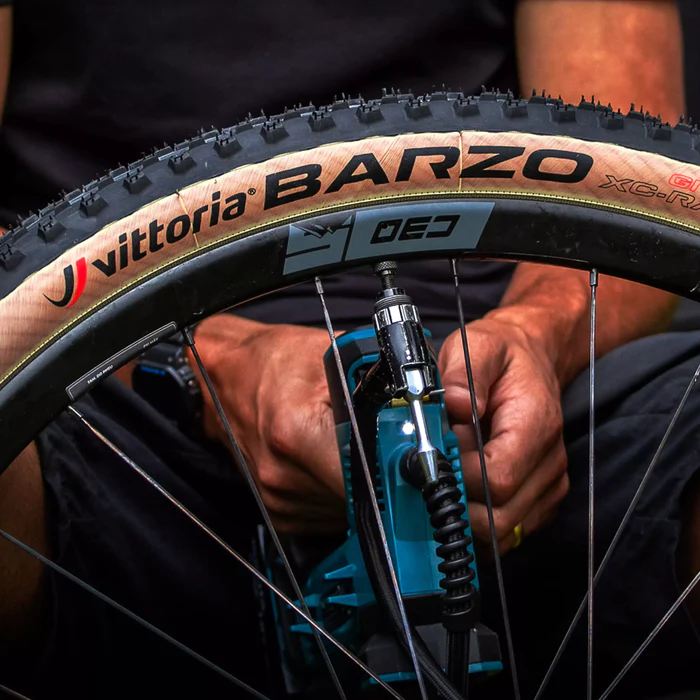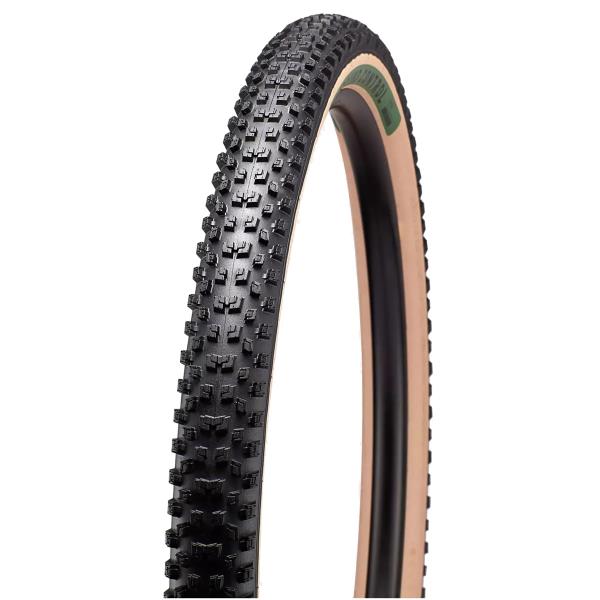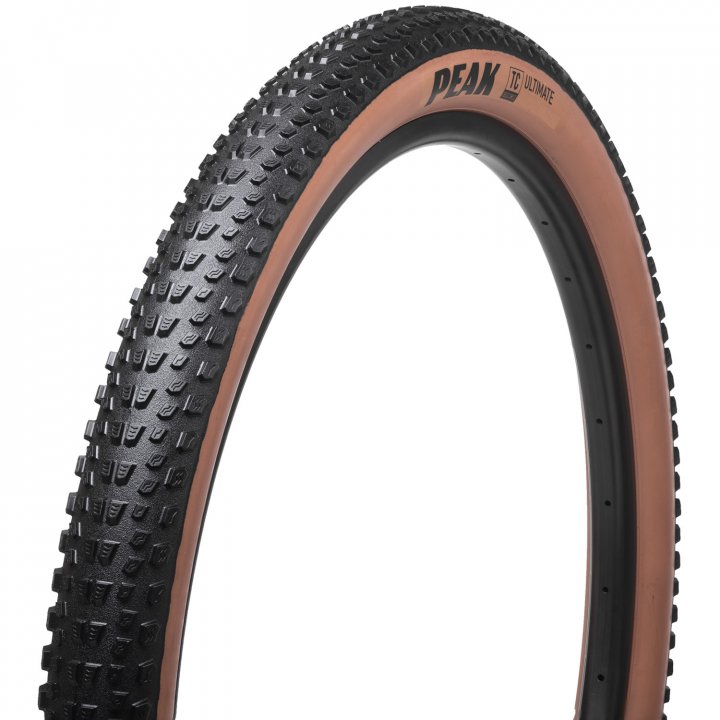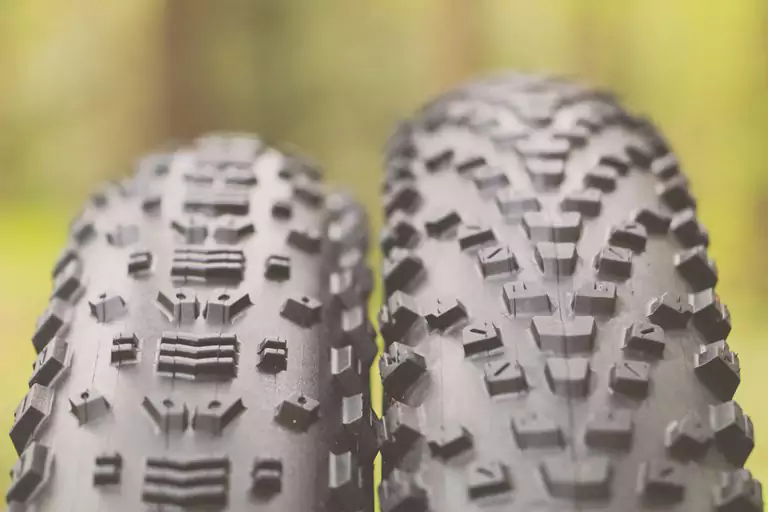Tire Insights 101: Inner Tube vs Tubeless Cross Country Tires

Key Point Summary of Inner Tube vs Tubeless Cross Country Tires:
- Inner Tube Tires: Traditional setup; air is contained within a separate tube. Known for simplicity and ease of installation.
- Tubeless Tires: Eliminates the inner tube, creating a seal between the tire and rim. Offers advantages in weight reduction, reduced rolling resistance, and improved puncture resistance.
- Comparison Factors: Consider weight, puncture resistance, ride quality, and maintenance when choosing between inner tube and tubeless setups.
- Transitioning Tips: For those considering moving from inner tube to tubeless, or vice versa, practical advice on making the switch.
As a masters cyclist with years of racing and riding experience across mountain bikes, gravel, and cyclocross disciplines, I’ve had my fair share of flat tires, fast descents, and everything in between. The debate between inner tube and tubeless tires is one I’ve navigated personally and through many conversations at the starting line, on the trails, and at post-ride gatherings. Here, I’ll delve into the inner tube vs. tubeless discussion, aiming to shed light on the topic for beginner to mid-level cyclists, with some personal anecdotes to illustrate key points.
Inner Tube Tires: The Traditional Choice
Starting with inner tube tires, they’re what many of us learned to ride on. The simplicity of having a separate tube inside the tire that holds air makes maintenance and understanding puncture straightforward. I remember the first time I had to fix a flat during a ride in the early days—pulling out the tube, finding the thorn, patching it up, and getting back on the road was almost a rite of passage. Inner tube tires have their advantages, especially in terms of initial setup and cost. For beginners, the familiarity and lower upfront investment can be comforting.
Tubeless Tires: A Game Changer
The transition to tubeless tires was a significant shift in my cycling experience. Tubeless setups eliminate the inner tube, relying on a seal between the tire and the rim to hold air. This technology can reduce weight, lower rolling resistance, and dramatically improve puncture resistance through the use of sealant. One of my most memorable moments was during a rugged mountain bike race where I rolled over a sharp rock that would have undoubtedly flattened an inner tube tire. Thanks to my tubeless setup, the sealant quickly filled the small puncture, and I was able to continue without stopping.
Weighing the Pros and Cons
Choosing between inner tube and tubeless setups involves considering several factors:
- Weight: Tubeless tires can offer weight savings, crucial for climbing and acceleration. The absence of an inner tube reduces the rotational mass, making a noticeable difference in handling and performance.
- Puncture Resistance: The use of sealant in tubeless tires enhances puncture resistance. Sealant can repair small punctures almost instantly, a feature that has saved me from countless roadside repairs.
- Ride Quality: Tubeless tires can be run at lower pressures without the risk of pinch flats, improving traction and comfort. This was a revelation on technical off-road descents, where the increased grip and smoother ride quality were immediately apparent.
- Maintenance: While tubeless setups can be more challenging to install and initially seal, the overall maintenance can be lower due to the reduced frequency of flats. However, managing sealant levels and occasional re-sealing can be new tasks for those used to inner tubes.
Transitioning Tips
For cyclists considering the switch from inner tube to tubeless, or vice versa, here are some practical tips based on my experiences:
- Research and Compatibility: Ensure your rims are tubeless compatible and choose tires designed for tubeless use. Not all rims and tires work well together, and a mismatch can lead to frustrating setup experiences.
- Invest in Quality Sealant: The right sealant can make all the difference in a tubeless setup’s success. Don’t skimp on this—quality sealant can better seal punctures and last longer between top-ups.
- Patience and Practice: Setting up tubeless tires for the first time can be challenging. Be prepared for a learning curve and consider watching tutorial videos or asking for help from more experienced riders.
Concluding Thoughts
The choice between inner tube and tubeless tires is not just a matter of technology but also personal preference, riding style, and the types of terrain you frequent. While I’ve come to favor tubeless for its performance and convenience benefits, there are still scenarios where I opt for an inner tube setup, such as certain types of racing or when traveling to areas where quick fixes are paramount.
Whether you’re drawn to the simplicity and reliability of inner tubes or the performance advantages of a tubeless setup, the most important thing is to make an informed choice that suits your riding needs. Experiment, ask questions, and don’t be afraid to try something new—you might just find that it revolutionizes your riding experience, as it did for me.
Among the myriad options for cross-country (XC) tires, models like the Specialized Ground Control 2Bliss Tire and the Goodyear Peak Ultimate Tubeless Tire stand out for their reversible compatibility between inner tube and tubeless setups. This feature is particularly valuable for XC riders who demand flexibility and adaptability from their equipment. The Specialized Ground Control 2Bliss utilizes a technology that supports easy conversion to a tubeless system while still being capable of holding an inner tube, offering riders the best of both worlds—whether they prioritize puncture resistance and lower weight or simplicity and reliability.

Similarly, the Goodyear Peak Ultimate is designed under the Tubeless Complete system, ensuring that riders can enjoy the benefits of a tubeless setup without sacrificing the option to revert to traditional inner tubes if conditions or personal preferences change. This reversible compatibility is a testament to the evolving landscape of XC cycling, where versatility and performance converge to meet the diverse needs of modern riders.

FAQ
Are tubeless tyres better than inner tubes?
Tubeless tires are generally considered better than inner tubes for most cycling disciplines due to their lower weight, improved puncture resistance (thanks to sealant), and the ability to run lower pressures for better grip and comfort.
Which is better tube or tubeless tyre for car?
Tubeless tires are better for cars. They offer better safety due to less sudden blowouts, improved fuel efficiency, and enhanced performance compared to traditional tube tires.
Do pro cyclists use tubeless tires?
Pro cyclists use tubeless tires, but the adoption varies by discipline. Road cyclists have been slower to adopt tubeless compared to mountain bikers and cyclocross riders, where tubeless technology’s benefits are more pronounced. However, tubeless usage in professional road cycling is increasing due to its advantages in certain conditions.
Are tubeless tires better for road bikes?
Yes, tubeless tires are better for road bikes in many scenarios. They offer benefits such as reduced puncture risk, lower rolling resistance, and the ability to run lower tire pressures for increased comfort and better traction, especially on rough or uneven surfaces.
Ride on
John





